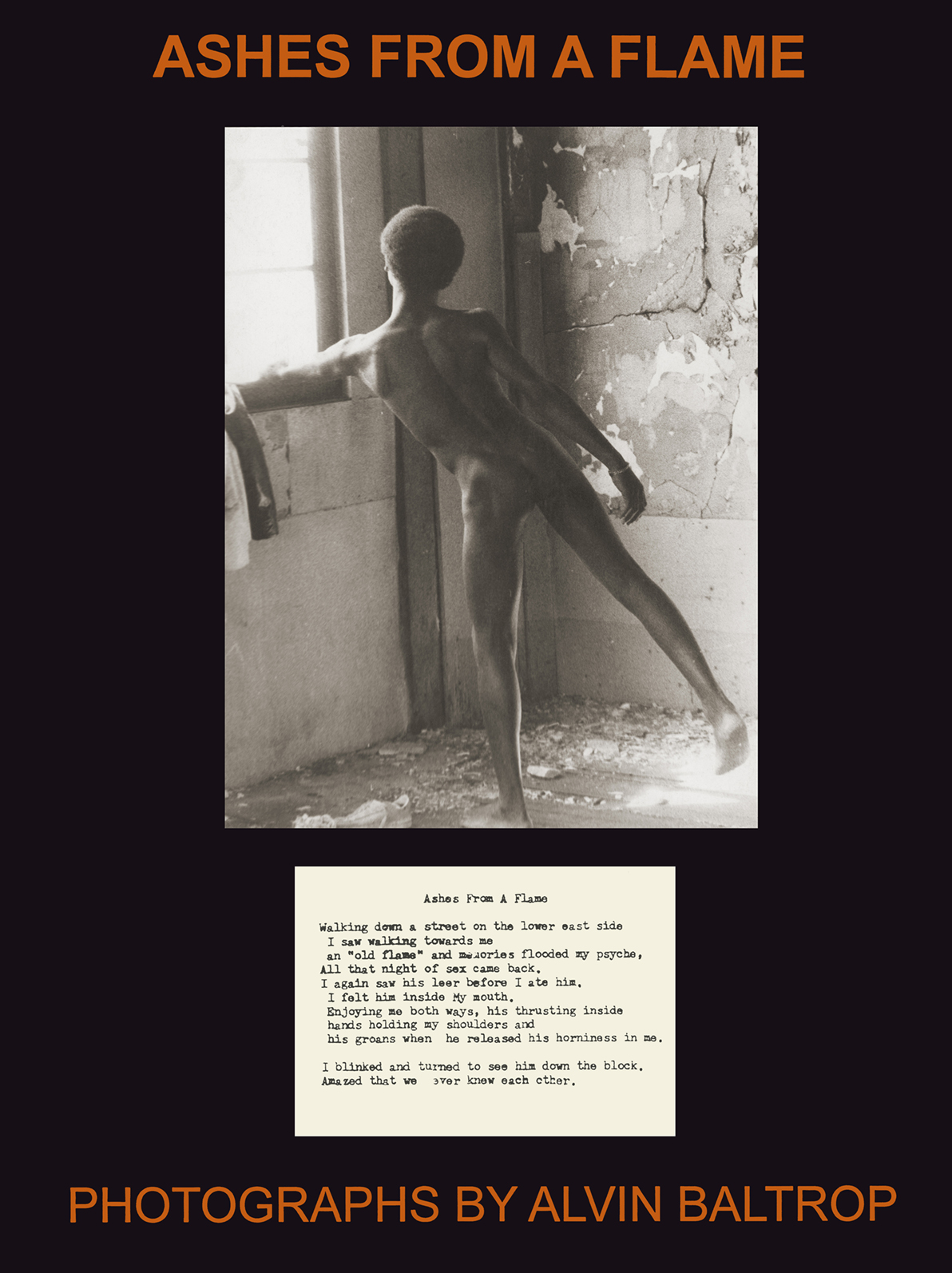Ashes from a Flame
Alvin Baltrop
Ashes from a Flame was created by the photographer Alvin Baltrop and completed just before his death in 2004. Unpublished until now, the book documents the social, sexual, and creative life of New York City’s West Side Piers in the 1970s and 1980s. Ashes from a Flame contains seventy-six photographs and an introduction co-authored by Baltrop and editor Randal Wilcox contextualizing the publication and its subjects.
Overlooked in his lifetime due to his institutional marginalization as a Queer Black artist, Baltrop’s photographs are pivotal to our understanding of Queer culture in a post-Stonewall New York, providing an unfiltered and unsentimental window into a complex urban space hallmarked by sexual liberation (for some) and the poverty, drug addiction, mental illness, and violence that lay just beneath its surface. Although Baltrop has gained posthumous renown for his work through a handful of exhibitions and publications in recent years, this is the first book to provide his own vision of the culture he captured.
Compiled long after economic forces and HIV/AIDS changed the architecture and sexual politics of Queer culture and New York City as a whole, Ashes from a Flame begins by acknowledging the apparitional space it records. The first photograph shows the World Trade Center situated between an elevated railway and a building on the piers, accompanied by the caption “West Side Ghosts.” This is followed by photographs of young men convening, sunbathing, and having sex alongside images of artistic interventions in the industrial landscape—murals by Gustav “Tava” von Will on warehouse walls and Gordon Matta-Clark’s Day’s End installation on Pier 52. In other works, Baltrop focused his lens on the rusted beams, broken glass, and shredded curtains of the dilapidated architecture of the once-thriving maritime port. Images of this subculture and its architecture showcase a side of the city that was hidden from view and soon to be lost. The final photographs in the book capture the destruction of one of the piers in the 1980s, foreshadowing the end of an era.
While very few people have seen the original publication, art historian Douglas Crimp consulted it for his landmark Artforum essay on the artist, writing, “the complexity of Baltrop’s legacy resides not only in the record his photographs provide of utopian and dystopian occurrences, but also in their evidence that the moment in Manhattan’s history when we could so thoroughly reinvent ourselves was as precarious as the places where we did it.” The book commemorates the lives Baltrop captured on film, many of whom have been lost to time, as have the places they used to call home.
Alvin Baltrop (1948–2004) was a Bronx-born photographer who lived and worked in New York City. After serving in the Vietnam War (1969–72), he studied at the School of Visual Arts and later turned his lens to the city’s underground gay culture. From the mid-1970s through the 1980s, Baltrop obsessively documented the West Side piers—derelict spaces that became sites of cruising, art-making, and survival. His unflinching photographs reveal both the intimacy and danger of this hidden world, offering a stark counterpoint to the era’s glamorous nightlife. Today, his work stands as a vital record of queer history and New York’s urban margins.
88 pages
8.5 x 11 inches
Paperback
Spring 2026
ISBN: 9798991036719
—
Editor: Randal Wilcox
Managing Editor: Jules Spector


